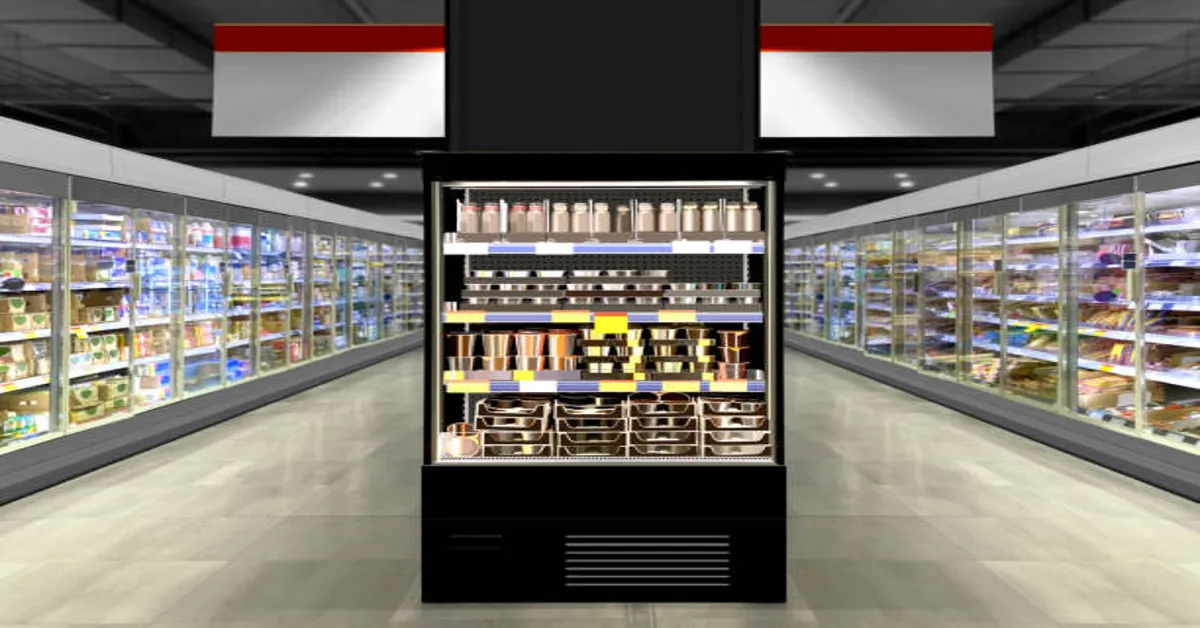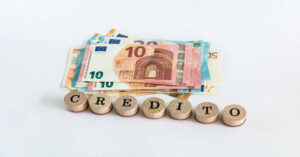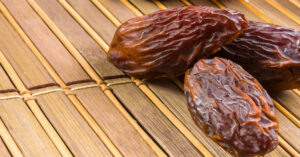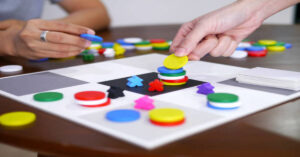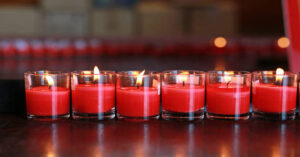The word “glacevitrine” originates from French, combining “glace” (ice or cold) and “vitrine” (display case). In simple terms, a glacevitrine refers to a refrigerated display case, an essential piece of equipment in bakeries, restaurants, patisseries, supermarkets, and cafés. These systems are designed not only to preserve food items at ideal temperatures but also to present them in an attractive, appetizing manner to customers.
This article offers a comprehensive exploration of glacevitrines—covering their history, working principles, types, energy efficiency, design innovations, and maintenance best practices. It also highlights how they influence customer behavior and contribute to modern food merchandising.
1. Introduction to Glacevitrine
A glacevitrine is a specialized refrigeration unit that merges functionality with aesthetics. Its main objective is dual: to maintain product freshness while providing clear visibility. Businesses use glacevitrines for displaying pastries, desserts, salads, beverages, dairy products, or even meats—depending on the model and temperature range.
Unlike ordinary refrigerators, glacevitrines are designed with transparent glass panels, LED illumination, and temperature-controlled compartments to ensure products are both appealing and safe for consumption. The visual presentation of food has a psychological impact—customers are more likely to make impulsive purchases when they see well-arranged, fresh-looking items in a well-lit glacevitrine.
2. Historical Evolution of Display Refrigeration
Refrigerated display systems emerged in the early 20th century, evolving alongside commercial refrigeration technology. The first glacevitrines were basic insulated boxes with ice blocks. As electric refrigeration became widespread in the 1920s and 1930s, businesses adopted mechanical systems with compressors and cooling coils.
Over time, the glacevitrine transformed from a mere storage cabinet to an advanced marketing tool. The introduction of tempered glass, stainless steel finishes, LED lighting, and automatic defrosting systems revolutionized its role in commercial spaces. Today, glacevitrines represent the perfect fusion of engineering precision and visual merchandising.
3. Design and Structural Components
A glacevitrine is composed of several interdependent parts that ensure temperature stability, hygiene, and efficient presentation. Below is a breakdown of its main components.
| Component | Description |
|---|---|
| Compressor Unit | The heart of the refrigeration system that compresses refrigerant gas and drives the cooling cycle. |
| Evaporator Coils | Absorb heat from the cabinet interior, maintaining the desired temperature. |
| Condenser | Releases absorbed heat to the external environment. |
| Display Glass | Typically made from tempered or double-glazed panels to prevent condensation and improve insulation. |
| Shelving System | Adjustable and made from stainless steel or glass to hold displayed products efficiently. |
| Lighting | LED lights enhance product visibility and reduce energy consumption. |
| Thermostat Controller | Allows users to set and maintain the precise temperature. |
| Fans / Air Curtains | Ensure even air distribution and prevent warm air infiltration when the unit is open. |
These features work harmoniously to balance temperature control, visibility, and energy efficiency—the three pillars of glacevitrine performance.
4. Working Principle of Glacevitrine
The operation of a glacevitrine follows the basic refrigeration cycle. Here’s a simplified explanation:
- Compression: The compressor pressurizes the refrigerant gas, raising its temperature.
- Condensation: The hot, pressurized gas passes through condenser coils, releasing heat to the surroundings and turning into a liquid.
- Expansion: The refrigerant passes through an expansion valve, lowering its pressure and temperature.
- Evaporation: Inside the evaporator, the refrigerant absorbs heat from the internal air, cooling the display area.
- Cycle Repeat: This continuous loop maintains a stable, chilled environment for displayed goods.
Some modern glacevitrines incorporate inverter technology and smart sensors that automatically adjust compressor speed and temperature levels based on load conditions—making them more energy-efficient and eco-friendly.
5. Types of Glacevitrine
Glacevitrines are categorized according to their application, temperature range, and design. Below is a classification overview:
| Type | Temperature Range | Common Use | Example |
|---|---|---|---|
| Positive Temperature Display Case | +2°C to +10°C | Pastries, cakes, sandwiches, dairy products | Bakery displays |
| Negative Temperature Display Case | -18°C to -22°C | Ice cream, frozen desserts | Gelato counters |
| Vertical Glacevitrine | +1°C to +7°C | Beverages, bottled products | Supermarket coolers |
| Serve-over Counter | +3°C to +8°C | Deli meats, cheeses, salads | Delicatessens |
| Self-service Models | +2°C to +10°C | Pre-packed foods, drinks | Cafeteria setups |
| Custom-built Units | Variable | Designer stores, hotels | Boutique patisseries |
Each model is designed to meet the operational and aesthetic needs of specific commercial spaces.
6. Materials and Build Quality
A high-quality glacevitrine combines durability, hygiene, and design sophistication. The materials commonly used include:
- Stainless Steel: Resistant to corrosion and easy to clean—ideal for food safety compliance.
- Tempered Glass: Ensures visibility, prevents shattering, and maintains insulation.
- Polyurethane Foam Insulation: Provides high thermal resistance and minimizes temperature loss.
- Aluminum Frames: Lightweight yet strong, enhancing structural integrity.
In premium models, manufacturers also integrate anti-fog coatings, UV-protective films, and touchscreen controls for a more luxurious user experience.
7. Temperature Control and Air Circulation
Effective temperature management is crucial in a glacevitrine. Two main cooling methods are employed:
- Static Cooling: Involves direct contact with cooling plates. It offers silent operation but may lead to uneven temperature distribution.
- Ventilated (Forced-Air) Cooling: Uses internal fans to circulate cold air evenly, maintaining consistent temperature across all shelves.
For delicate foods like pastries or salads, the temperature range must remain within strict margins. Fluctuations can cause condensation, spoilage, or changes in texture. Modern glacevitrines utilize digital thermostats with sensors that constantly monitor interior conditions to prevent such issues.
8. Energy Efficiency and Environmental Considerations
Energy consumption is a key concern in commercial refrigeration. A well-designed glacevitrine can significantly reduce electricity bills through:
- High-efficiency compressors
- LED lighting systems
- Automatic night blinds or doors
- Low-emission refrigerants (like R290 propane)
- Improved insulation thickness
Energy Performance Table
| Feature | Energy Saving (%) | Description |
|---|---|---|
| LED Lighting | 15–25% | Lower heat emission compared to fluorescent lamps |
| Inverter Compressors | 20–30% | Adjusts power based on cooling demand |
| Smart Defrost Systems | 10–15% | Activates only when ice buildup occurs |
| High-Density Insulation | 8–12% | Reduces temperature loss |
Environmentally, the industry has moved toward CFC-free refrigerants, recyclable materials, and compliance with ISO 14001 environmental standards. Sustainable design not only protects the planet but also boosts brand reputation.
9. Aesthetic and Marketing Impact
A glacevitrine is more than a cooling device—it is a sales enhancer. The way products are presented directly influences customer perception and purchase decisions. A well-lit, clean, and organized display can increase impulse buying by up to 30%.
Visual Merchandising Tips:
- Arrange products by color and type for aesthetic harmony.
- Keep the front glass spotless for maximum visibility.
- Rotate stock regularly to ensure freshness.
- Use warm lighting tones for desserts and cool tones for beverages.
Modern glacevitrines come with curved glass fronts, frameless edges, and under-counter lighting, turning food into an art display.
10. Applications of Glacevitrine Across Industries
| Industry | Usage Example | Purpose |
|---|---|---|
| Bakery & Patisserie | Displaying cakes, pastries, chocolates | Maintain freshness and aesthetic appeal |
| Supermarkets | Storing dairy and ready-to-eat meals | Promote visibility and convenience |
| Hotels & Restaurants | Showcasing desserts, salads, and drinks | Create an upscale dining experience |
| Cafeterias | Presenting self-service foods | Encourage quick selection and hygiene |
| Pharmacies (Special Type) | Preserving temperature-sensitive drugs | Ensure stability and efficacy |
Thus, glacevitrines cater to diverse business sectors that rely on visual presentation and controlled preservation.
11. Cleaning and Maintenance
Routine maintenance ensures long equipment life and food safety. Below are standard maintenance guidelines:
| Maintenance Task | Frequency | Purpose |
|---|---|---|
| Clean Glass Panels | Daily | Prevent fog and maintain clarity |
| Defrost Evaporator Coils | Weekly | Avoid ice accumulation |
| Sanitize Shelves | Daily | Prevent bacterial growth |
| Inspect Door Seals | Monthly | Prevent air leaks |
| Check Compressor Oil Levels | Quarterly | Ensure mechanical longevity |
Using mild, food-safe cleaning agents and avoiding abrasive cloths helps preserve the surface finish. Preventive maintenance reduces downtime and enhances operational reliability.
12. Common Issues and Troubleshooting
| Issue | Possible Cause | Solution |
|---|---|---|
| Temperature Fluctuations | Dirty condenser coils | Clean coils regularly |
| Condensation on Glass | Faulty door seals or humidity | Replace seals or use anti-fog coating |
| Uneven Cooling | Blocked air vents | Clear obstructions |
| Excessive Noise | Worn-out compressor | Call a technician |
| Lighting Failure | Burnt LED strip | Replace immediately |
Maintaining a troubleshooting log helps identify recurring issues and plan timely replacements.
13. Innovations in Modern Glacevitrines
Technological evolution has transformed glacevitrines into smart, connected devices. Advanced models now include:
- Touchscreen Controls: Allow temperature, humidity, and lighting adjustments.
- IoT Connectivity: Remote monitoring through mobile apps.
- Anti-bacterial Coatings: Improve hygiene.
- Eco-mode Functionality: Automatically reduces power use during off-hours.
- Adaptive Glass: Changes opacity to prevent UV exposure or fogging.
Such innovations enhance operational efficiency and user convenience.
14. Buying Guide: How to Choose the Right Glacevitrine
When selecting a glacevitrine, several factors must be considered:
- Purpose: Define whether it’s for bakery, ice cream, or beverages.
- Capacity: Estimate daily stock turnover to select appropriate volume.
- Temperature Range: Choose between positive or negative temperature units.
- Energy Efficiency: Opt for models with inverter compressors and LED systems.
- Design Compatibility: Ensure aesthetic harmony with your store’s interior.
- Ease of Cleaning: Choose models with removable trays and self-defrosting features.
- Warranty and Support: Prefer reputable brands offering maintenance services.
Investing in a high-quality glacevitrine ensures reliability, efficiency, and customer satisfaction.
15. Comparative Overview of Glacevitrine Models
| Feature | Standard Model | Premium Model |
|---|---|---|
| Cooling Type | Static | Ventilated / Inverter |
| Lighting | Fluorescent | LED with brightness control |
| Control System | Manual | Digital touch display |
| Glass Type | Single tempered | Double-glazed anti-fog |
| Energy Rating | B | A++ |
| Connectivity | None | IoT-enabled |
While premium models are more expensive, their long-term savings and aesthetic benefits justify the investment.
16. Safety and Hygiene Standards
Food safety is non-negotiable in commercial settings. Glacevitrines must comply with global standards such as:
- HACCP (Hazard Analysis and Critical Control Points): Ensures contamination prevention.
- ISO 22000: Food safety management system compliance.
- CE and RoHS Certifications: Guarantee electrical and material safety.
Maintaining hygienic surfaces, stable temperatures, and proper cleaning schedules is essential to uphold these standards.
17. Future Trends in Display Refrigeration
The glacevitrine industry continues to evolve in line with technological and environmental progress. Anticipated trends include:
- AI-based Temperature Regulation: Adaptive systems that analyze ambient conditions.
- Solar-powered Units: Renewable energy adoption.
- Modular Displays: Flexible designs for changing layouts.
- Augmented Reality Displays: Interactive product information overlays.
- Recyclable Materials: Full eco-sustainability goals by 2030.
These advancements will redefine how food businesses operate and interact with customers.
18. Economic and Environmental Impact
Investing in efficient glacevitrines has measurable benefits:
Economic Advantages
- Reduces product wastage by maintaining optimal temperature.
- Increases sales through appealing displays.
- Cuts operational costs via energy efficiency.
Environmental Benefits
- Low-GWP refrigerants reduce greenhouse gas emissions.
- Recyclable components promote circular economy.
- Smart sensors minimize electricity use.
Thus, glacevitrines contribute to both profitability and sustainability.
19. Case Example: Bakery Implementation
Imagine a boutique bakery installing a modern curved-glass glacevitrine with LED lighting and humidity control. Within three months:
- Product freshness improved by 20%.
- Electricity bills dropped by 18%.
- Customer purchases rose by 25%.
This example highlights how technology-driven refrigeration enhances both operational performance and customer experience.
Conclusion
A glacevitrine is not merely a cooling machine—it is a strategic asset for any business dealing with perishable goods. Its blend of technology, design, and marketing power makes it indispensable in modern commerce. By investing in high-quality equipment, maintaining it properly, and utilizing smart features, businesses can achieve optimal food preservation, attractive presentation, and sustainable operation.
In an era where visual appeal and freshness define brand reputation, the glacevitrine stands as a silent yet powerful contributor to success.
ALSO READ: TV 96: The Next Step in Television Innovation and Entertainment Evolution
Frequently Asked Questions (FAQs)
1. What is a glacevitrine used for?
A glacevitrine is a refrigerated display case used to store and present perishable food items such as cakes, dairy products, meats, and beverages while keeping them fresh and visually appealing.
2. What is the ideal temperature for a bakery glacevitrine?
Typically between +2°C and +8°C, depending on the type of pastries or desserts being displayed. Consistent temperature is vital for maintaining quality.
3. How can I make my glacevitrine more energy-efficient?
Use LED lighting, maintain clean condenser coils, install night blinds, and select inverter-based compressor systems to optimize energy consumption.
4. How often should a glacevitrine be cleaned?
It should be cleaned daily to maintain hygiene, with deeper maintenance like defrosting and coil cleaning performed weekly or monthly.
5. What are the future innovations in glacevitrine design?
Upcoming trends include smart sensors, AI-based cooling, IoT monitoring, and eco-friendly materials that reduce energy use and environmental impact.

